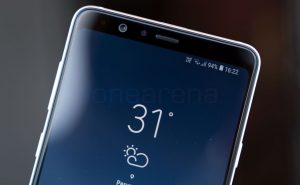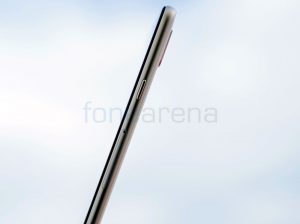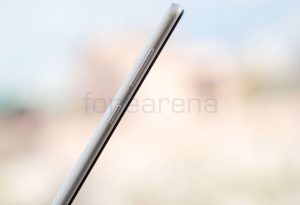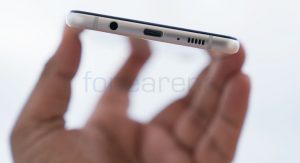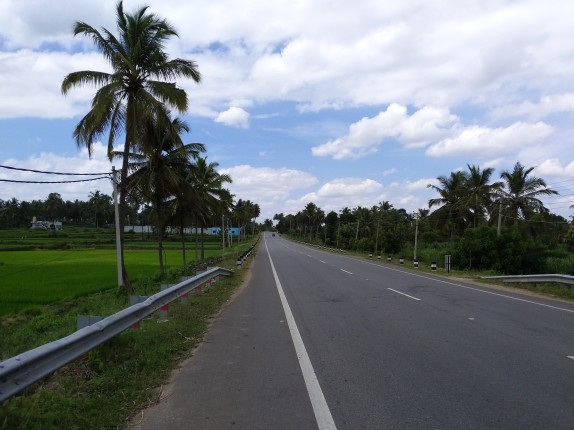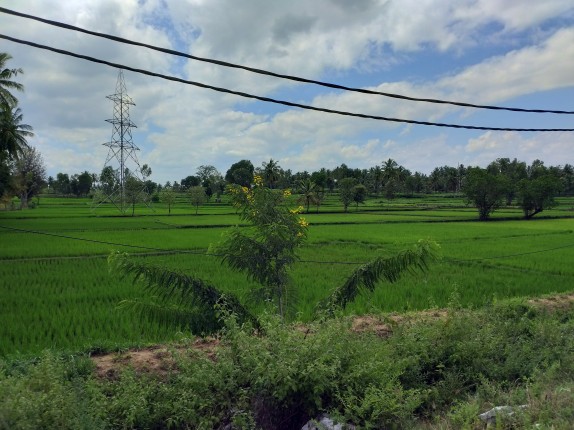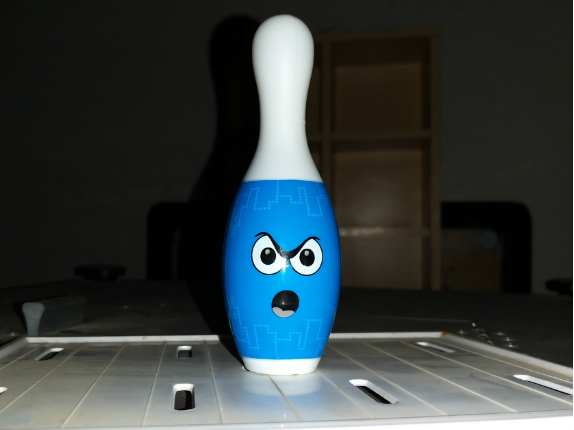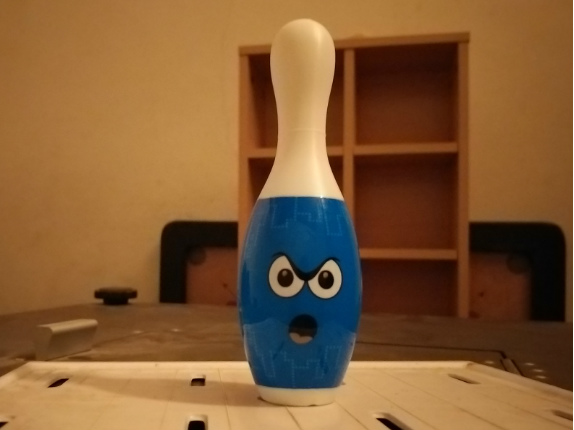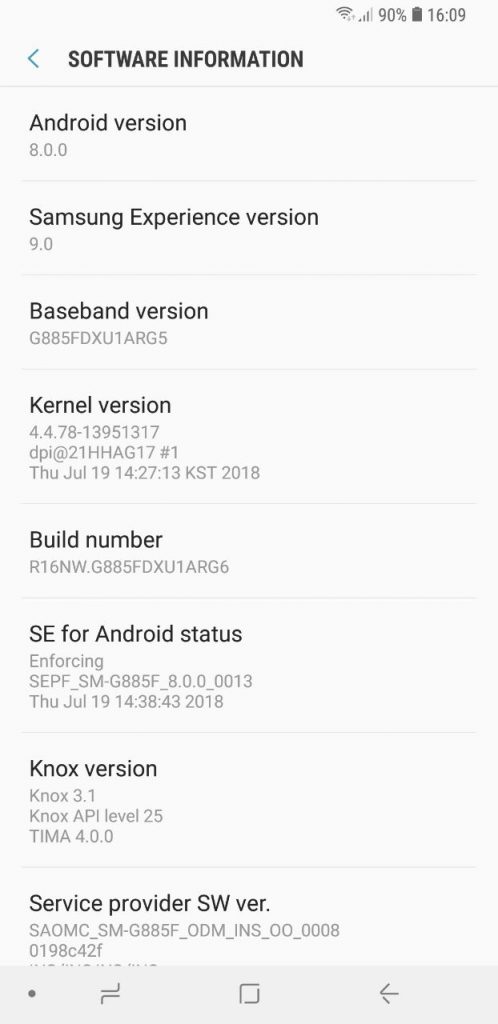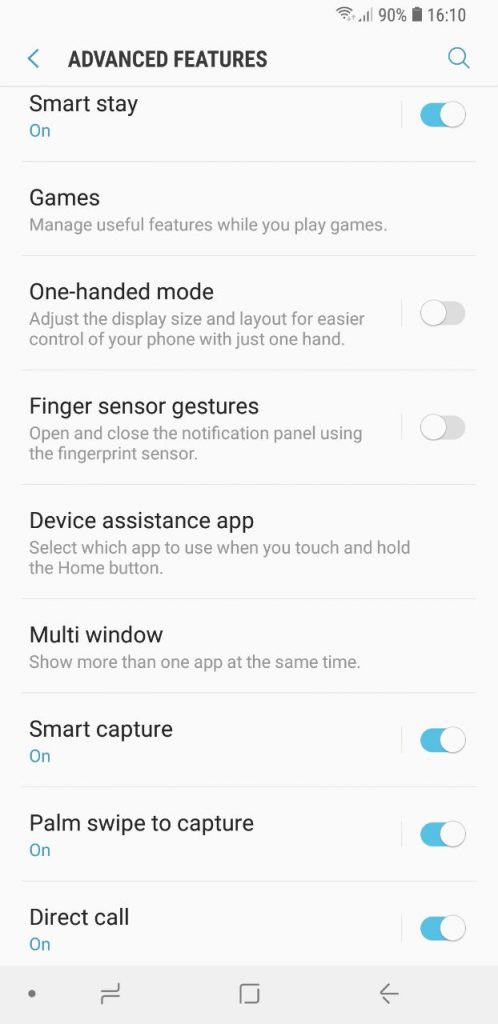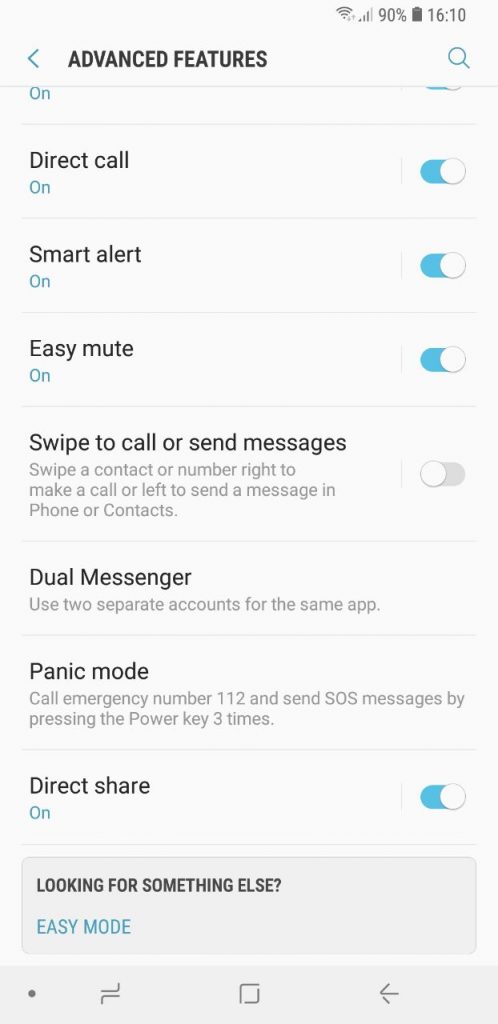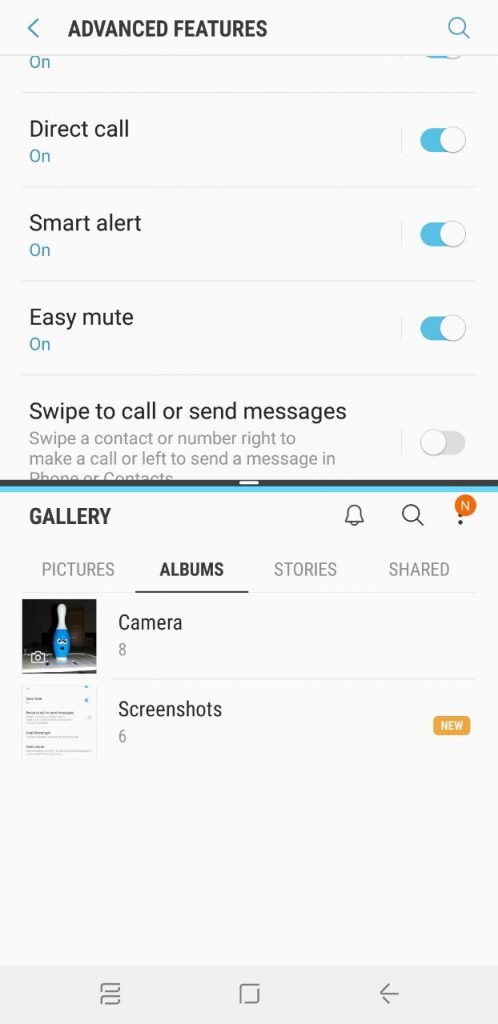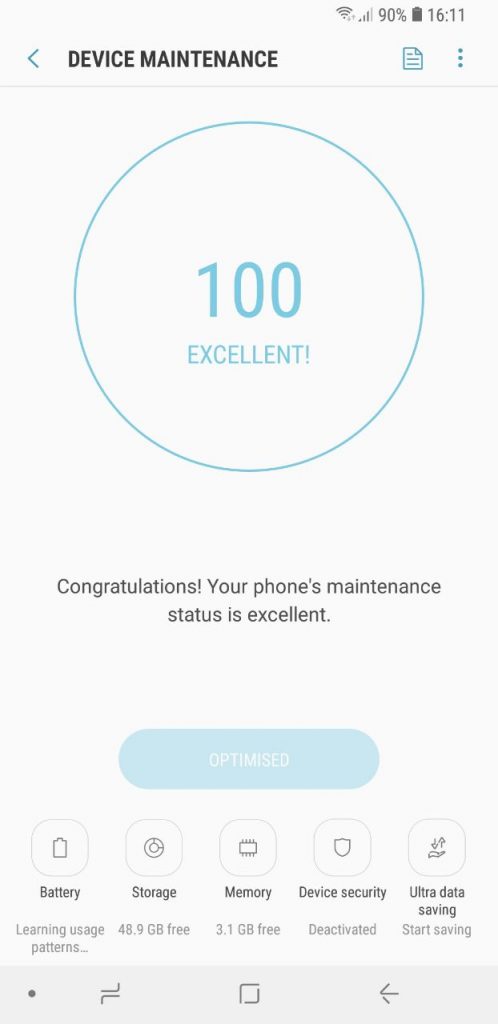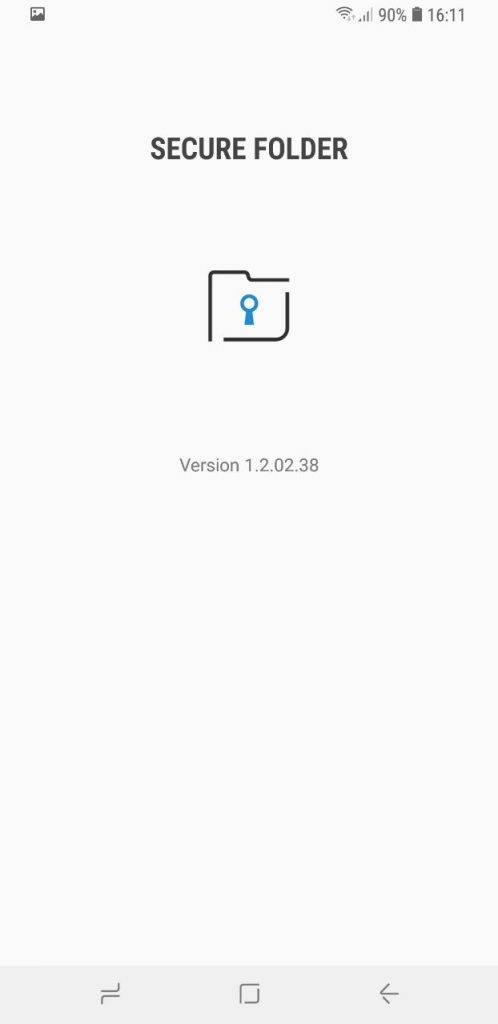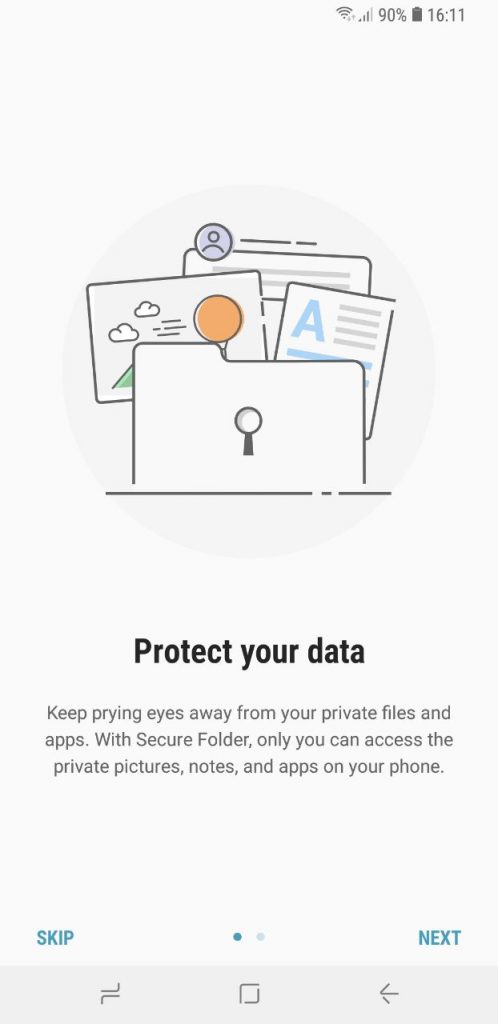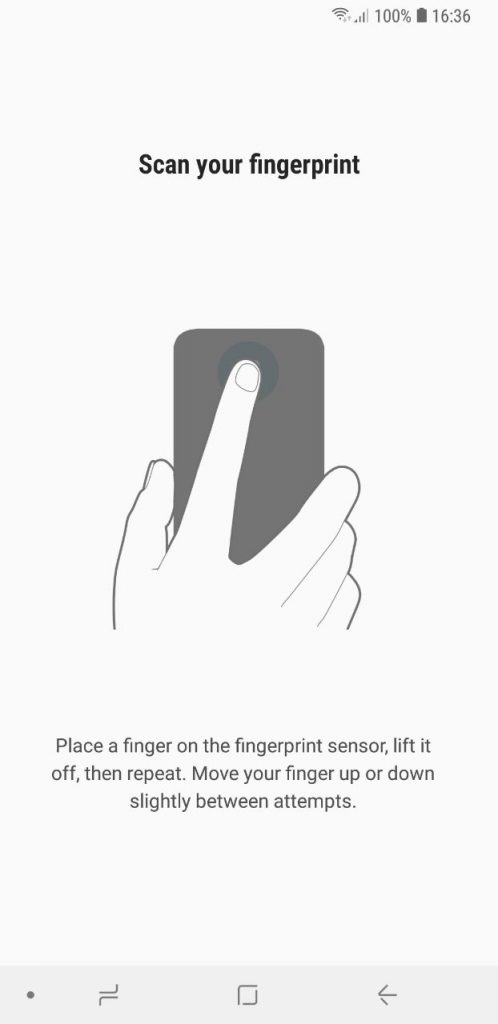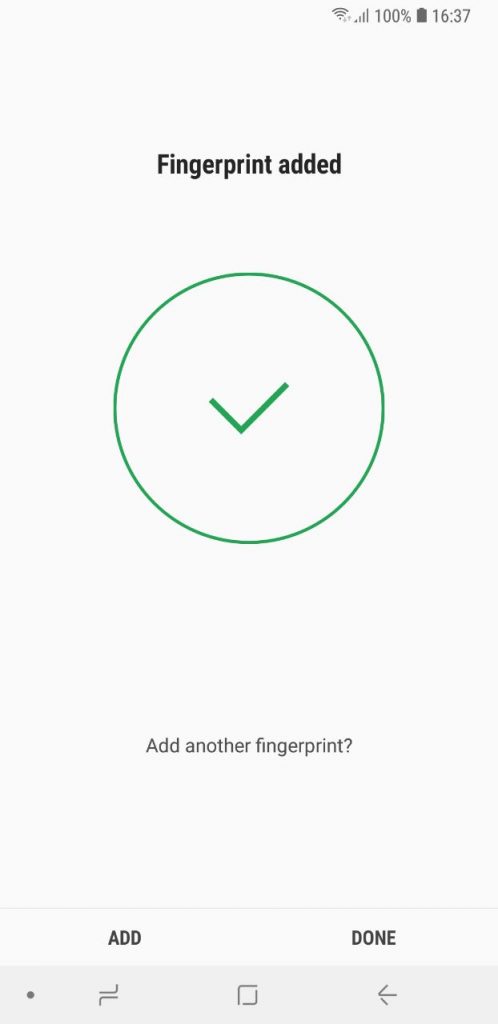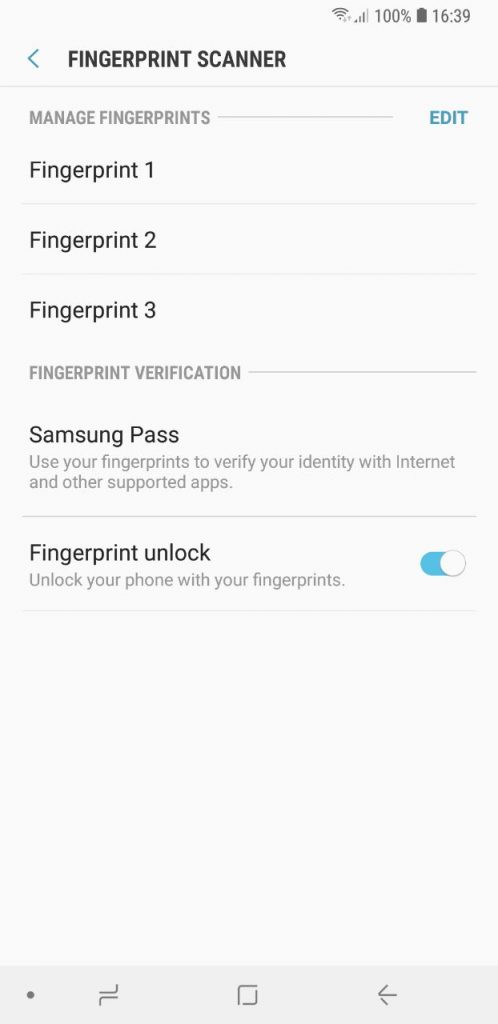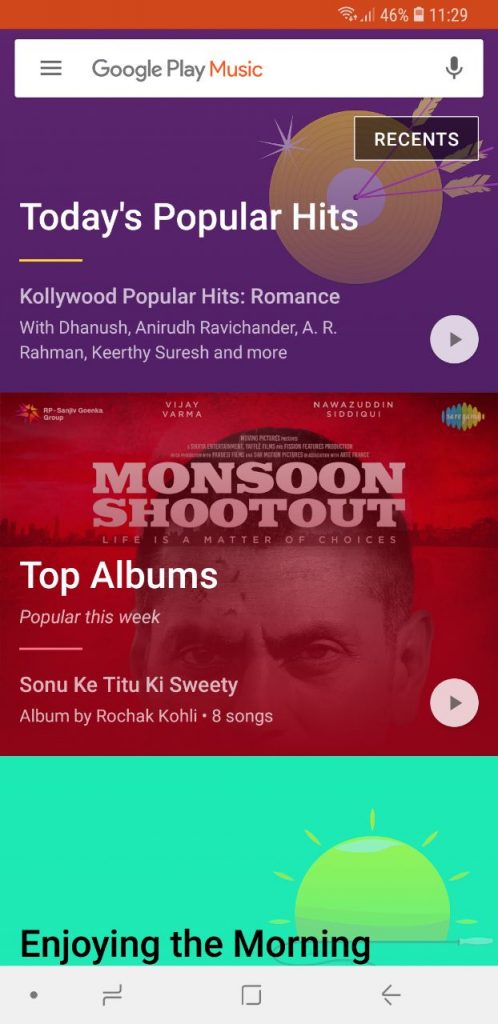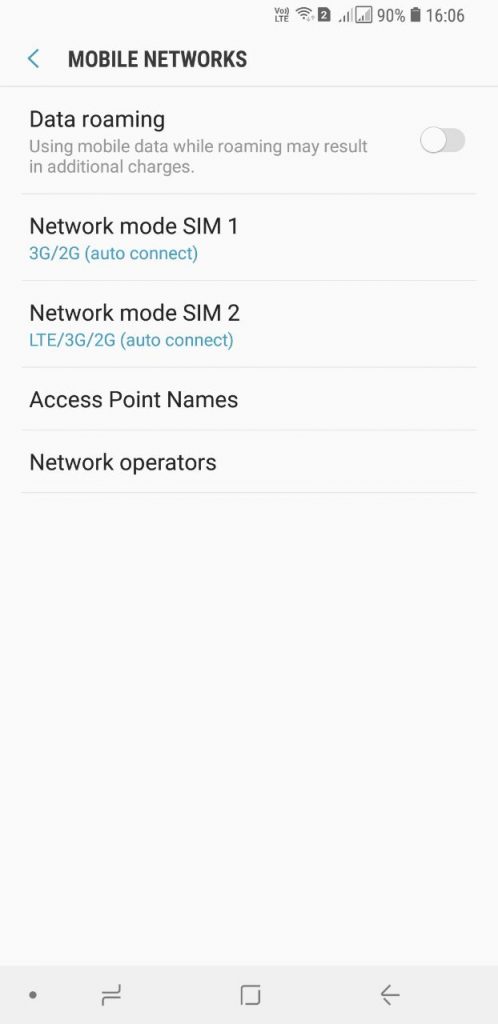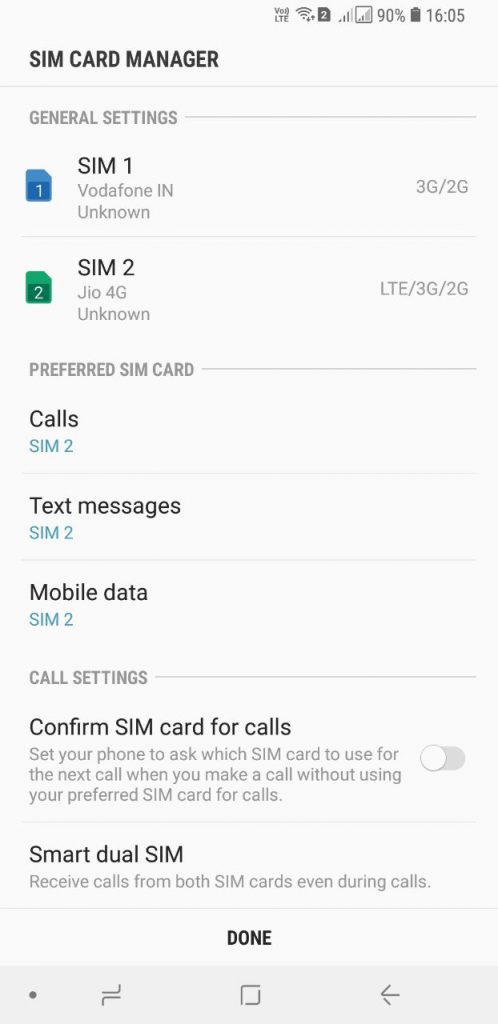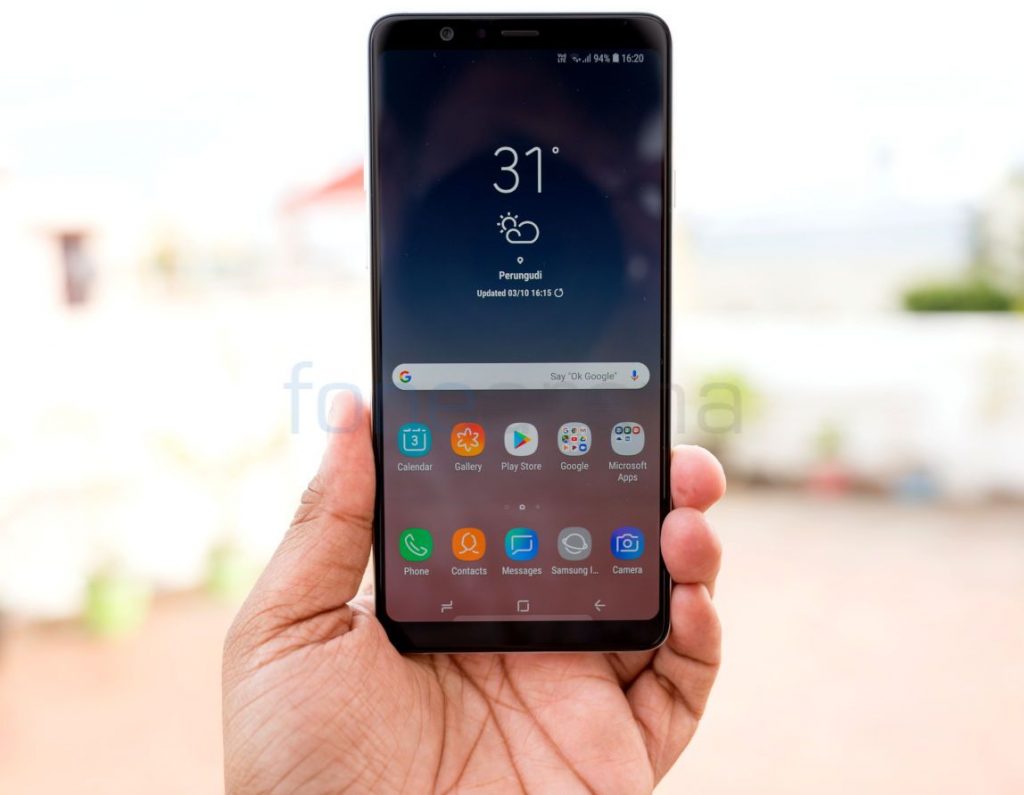
Samsung has been ruling the charts for some time now under the high-end segment giving a tough competition. But the company recreating the same magic with mid-range smartphones under Rs. 40,000? Well, the answer is no! With the penetration of Chinese handset makers including OnePlus, Huawei and other, the South Korean giant finding it tough to crack the market.
With the recent launch of Galaxy A8 Star in the Indian market at asking price of Rs. 34,990, Samsung thought of turning its fortune for good. Did Samsung succeed? Let’s find it out.
Display, design and hardware
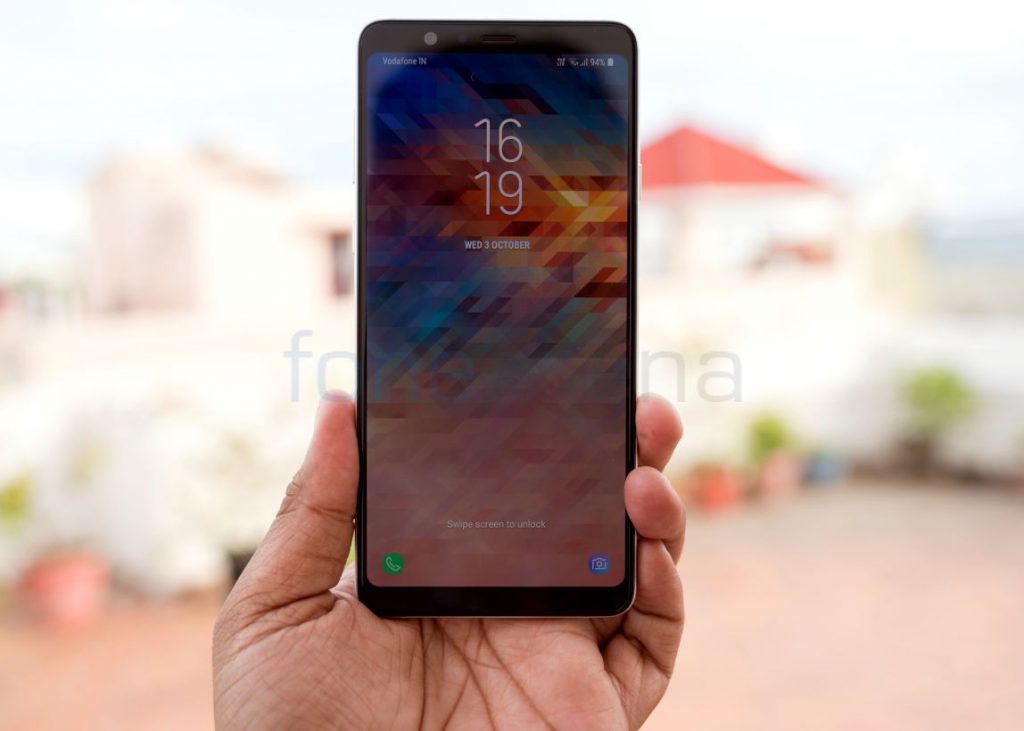
The Samsung Galaxy A8 Star sports a 6.28-inch FHD+ (1080×2220 pixels) FHD+ Super AMOLED Infinity display. It has a screen to body ratio of 80.6% and pixel density of 392ppi. The display is bright, the text looks sharp and sunlight legibility looks good too. Having said that, the viewing angle is not good since we observed green and blue hues from the sides. Moreover, there is a Blue light filter that is said to reduce eye strain by limiting the amount of blue light emitted by the screen. You can change font size and style and select apps that you want to use in the full-screen aspect ratio.
Talking about the placement, the front side is dominated by the screen itself. On top, we have a 24MP front-facing camera with f/2.0 aperture, bunch of sensors and earpiece. We have a small chin at the bottom as well.
The right side of the device has a power button along with the hybrid SIM slot (Nano+Nano/Nano+MicroSD card), while the left side houses volume rocker and Bixby button. The bottom side of the device has a 3.5mm audio jack, USB Type-C cable, the primary microphone and speaker grille. On the top, we have nothing except a secondary microphone.
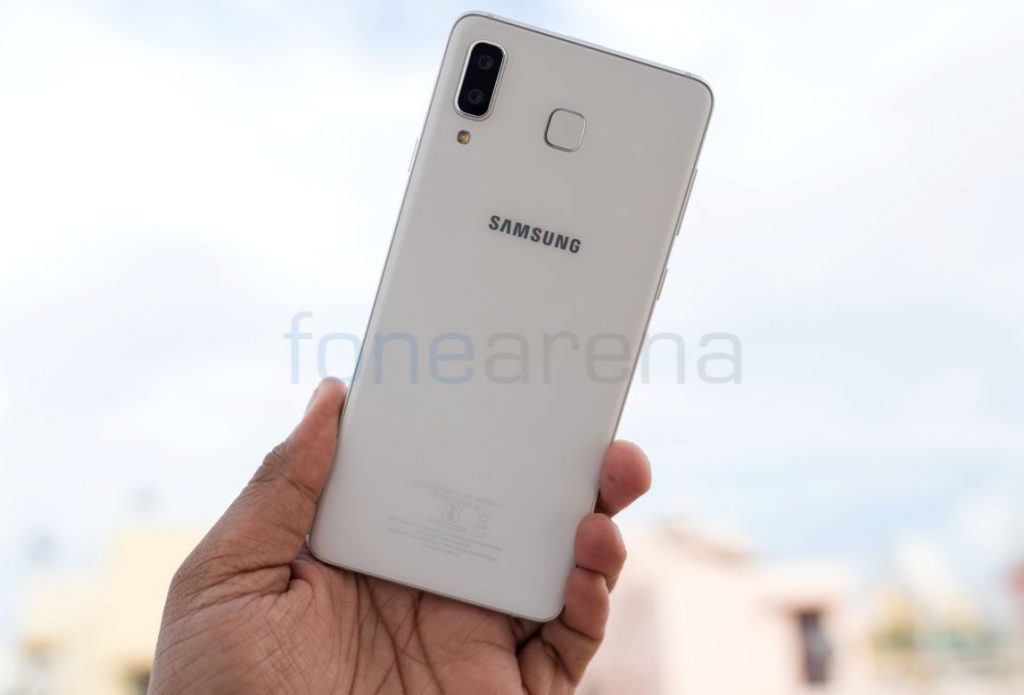
Turning it back, we have the dual camera setup placed vertically along with dual LED flash. Next, to the camera module, we have a fingerprint scanner in circular square shape. Since it has a glass back, it might get scratched easily when you place on the rough surface, so it is recommended to use a case, which Samsung doesn’t bundle with the phone.
The Galaxy A8 Star is too big to hold and bit hefty as well. This device measures 162.4×77.0×7.55mm and weighs around 188grams.
Camera
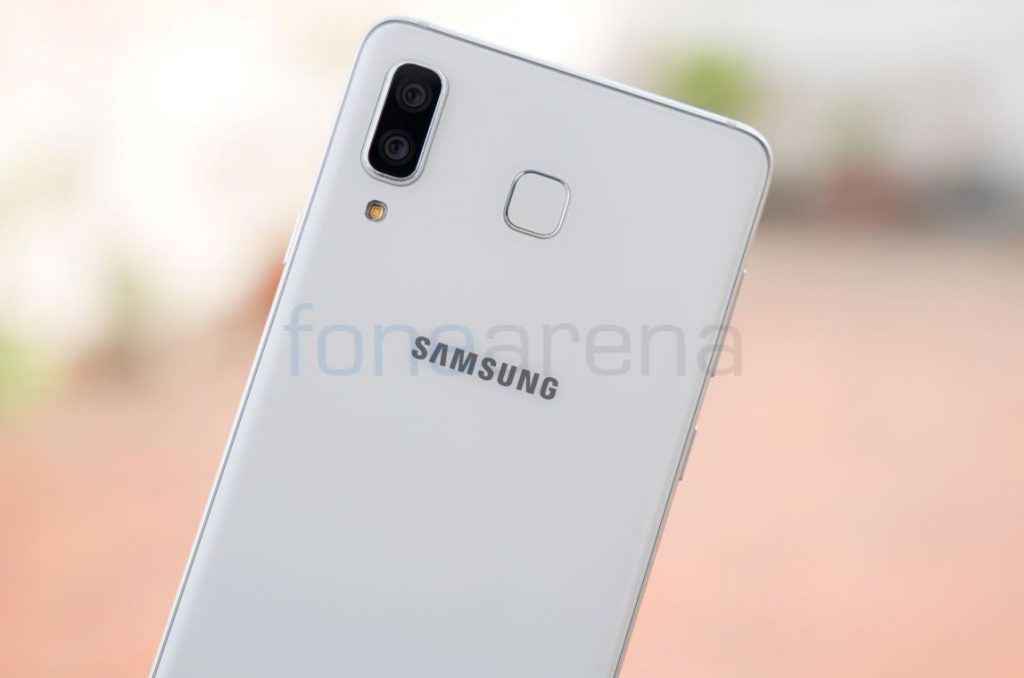
The Samsung Galaxy A8 Star comes equipped with a 16MP primary rear camera with LED Flash, f/1.7 aperture, and 24MP secondary rear camera as well. The front side of the device is taken care of 24MP camera with f/2.0 aperture.
The Galaxy S8 Star has a Live Focus that lets you adjust the bokeh effect. You can control the intensity of the overall blur effect and apply it before taking the image in preview mode, or after capturing the photo in the Gallery app. There is a selfie focus option for the front camera that uses software to blur the background.
Coming to the image quality, daylight shots are good and the camera captures a good amount of detail, creates really well-exposed photos with good dynamic range and detail and dynamic range can further be improved using the HDR mode.
The autofocus speeds are fast and accurate. Macro shots are good as well. Dual-camera Live focus mode clearly blurs out the background. Low-light performance is average with noise. However, low-light shots and images with flash don’t have many details.
The 24MP front camera is good for capturing selfies, and there is also an HDR option. The front camera has beautify features to adjust skin tone, spotlight and more features.
Check out some of the samples below. (Click the images to view full resolution samples)

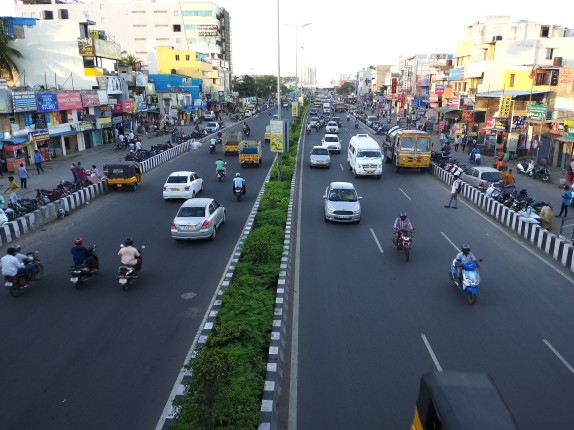

It can record videos at 4k resolution at 30 fps and there is also 720p slo-mo recording at 240 fps.
Software
The Samsung Galaxy A8 Star is shipped with Android 8.0 (Oreo) on top of Samsung Experience Version 9.0 with Android Security Patch level July 2018. The company doesn’t say when it will get the Android Pie update. The drop-down notification shade shows six toggles on the top, and more when you swipe down again. You can easily change the button order and the button grid (3×3, 4×3, 5×3). There are brightness control slider and option to choose SIM cards easily.
It has a vertical swiping interface by default instead of separate apps button, so to navigation between the home screen and app tray you need to swipe up or down. You have the option to add apps screen button to the home screen. You can simultaneously move multiple apps into a folder easily. You can tap and hold an app icon to open a quick options menu that lets you perform tasks such as uninstalling apps or moving them to Secure Folder without having to open the app. App icons and typography have been changed according to the new design language.
The advanced features option has a Smart stay to keep the screen on while you are looking at it, Games Launcher that gathers your games downloaded from Play Store and Galaxy Apps into one place for easy access and one-handed operation mode that lets you use the phone easily with one hand. Similar to other Android phones it has Multi Window mode that was first introduced by Samsung several years back.
Other options include Smart capture to capture the current screen and scrollable area, and crop and share the screenshot immediately, Palm swipe to capture a screenshot, direct call to make a voice call by picking up and holding the device near your ear while viewing call, message, or contact details, Smart alert to set the device to alert you if you have missed calls or new messages when you pick up the device, Easy mute to mute incoming calls or alarms by using palm motions or facing the device’s screen downwards, Swipe to call or send message and Panic mode to Send SOS message by pressing the Power key three times, including option to sound recordings along with the message to the recipients.
The Device maintenance option lets you manage your device’s battery life, storage, RAM usage, and security all in one place. The Samsung Secure Folder that lets you save your personal data and information.
Apart from the usual set of utility apps and Google Apps, the smartphone comes with the Facebook app and Microsoft Apps – Word, Excel, PowerPoint, OneDrive and LinkedIn. You get the option to install apps when you are setting up the phone. The phone has Samsung Pay Mini, which is Samsung’s own payment service, which has UPI support as well as support for Bill Payments.
It has a Bixby Assistant where you can slide to the left to view the Bixby screen or press and hold the dedicated Bixby button to launch it.
Fingerprint scanner
The placement of the fingerprint scanner in this device is literally awkward. Since the camera has been moved to the right side, the fingerprint sensor has gone further up, reminding the year-old Galaxy S8 and its unconventional fingerprint scanner.
Having said that, we didn’t find any flaws in our usage! It immediately unlocks the phone just by keeping your finger. You can add up to 3 fingerprints. It can also be used for Samsung Pay in markets where the service is available and for Samsung Pass to verify your identity with a browser and other supported apps. It has support for Face recognition, which doesn’t work well if the lighting is poor in the room, if you are wearing glasses, hats, or use heavy makeup. But it is quick to unlock the phone.
FM radio. loudspeaker and music player
It has FM Radio support with support for recording. Moreover, the smartphone doesn’t comes with native music player, so in this case, you can either choose Google Music or install your preferred music player. Audio through the bundled headset is decent, but using good third-party headphones makes it better. Loudspeaker output from the mono speaker is just average, especially in a noisy environment.
Performance
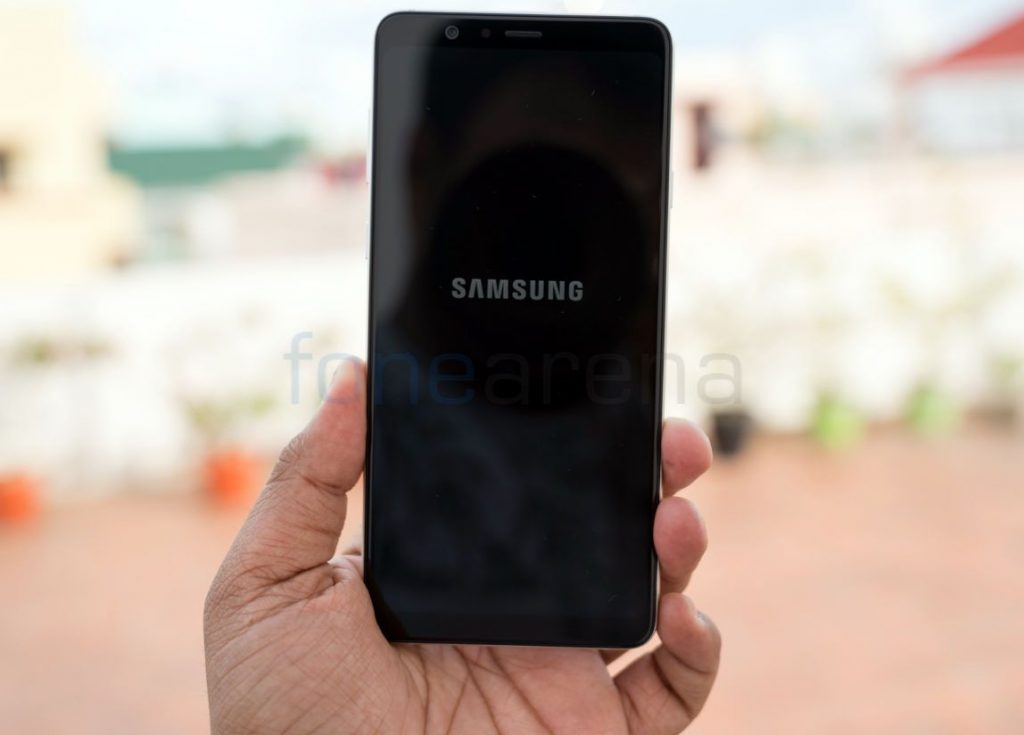
The Galaxy A8 Star is powered by Octa Core Snapdragon 660 14nm Mobile Platform (Quad 2.2GHz Kryo 260 + Quad 1.8GHz Kryo 260 CPUs) with Adreno 512 GPU under the hood. In our usage, the performance was smooth and never misses a beat. We haven’t witnessed any lag or hang. The gaming in this mobile is good but not exceptional considering the Adreno 512 GPU. It processes everything regardless of what you throw at it, thanks to 6GB RAM under the hood. Check out the synthetic benchmark scores below.
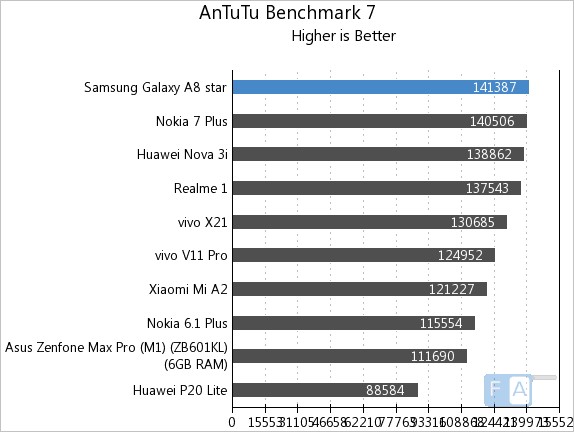
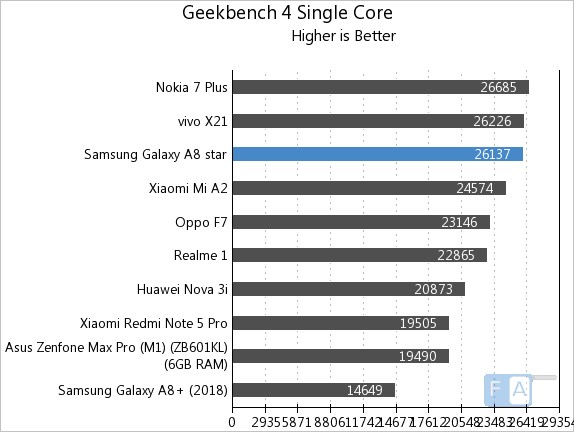
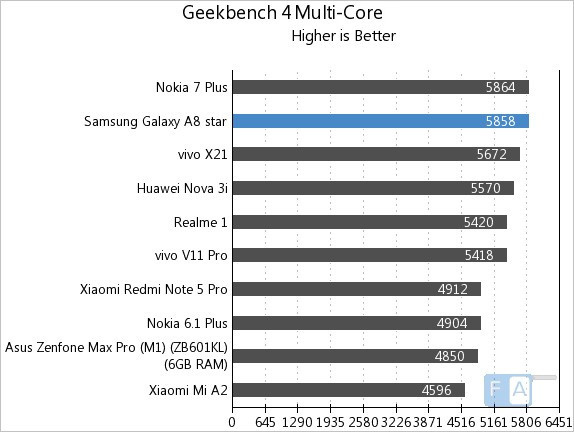
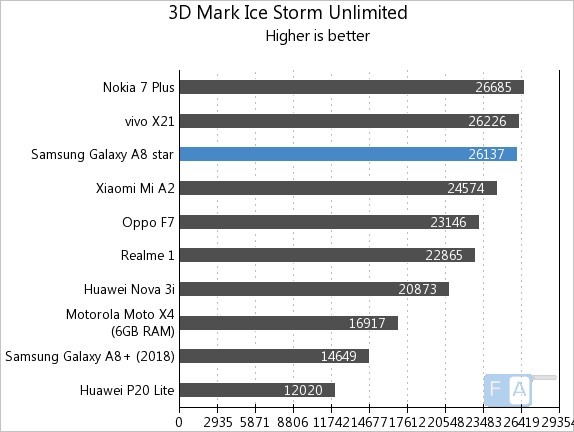
Dual SIM and Connectivity
The Samsung Galaxy A8 Star supports connectivity options including 4G VoLTE, Dual Band WiFi 802.11 ac, Bluetooth 5 LE and GPS on board. Both the SIMs support 4G, but you can enable 4G only in one SIM at a time, while the other goes to 3G. The dialer and messaging have familiar UI. Since this is a dual SIM phone, you get the option to select either SIMs when calling or sending a text message. There are no call drops and the earpiece volume is good.
You can set preferred SIM for a voice call, text and data from the SIM card manager. As usual, it has Smart Dual SIM feature, similar to other latest Samsung Dual SIM smartphones.
Battery
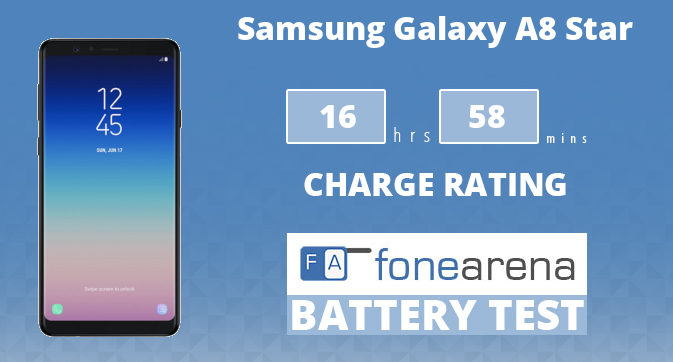
The Samsung Galaxy A8 Star is powered by a huge 3700mAh battery with adaptive fast charging. The A8 Star just serves its purpose perfectly, as a big battery phone. In our regular usage, we approximately got around two days on a single charge, which is just awesome. Even with intense usage which involved gaming, YouTube streaming, Netflix, and much more, we got through one day easily with the remaining 20% to 25% at the end.
In our One Charge rating, it achieved 16 hours 56 minutes, which is good. Since it has support for fast charging, it can charge from 0 to 50% in just 44 minutes and 0 to 100% takes 1 hour and 44 minutes using the bundled adaptive fast charger.
Conclusion
Samsung Galaxy A8 Star is a recommendable device available right now had they launched it under the price bracket of Rs. 22,000. Since it comes with a hefty price tag of Rs. 34,990 considering its specifications, other smartphones including OnePlus 6, Asus Zenfone 5Z and others seem like a better deal. It is available exclusively from Amazon.in. To summarize, here are the pros and cons of the smartphone.
Pros
- Good battery life
- Solid build quality
- Above average camera
Cons
- Bit heavy.
- Priced on the higher side
Photography by Siraj

